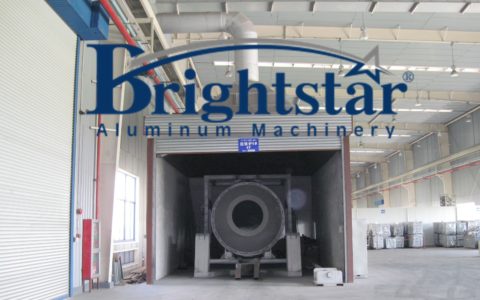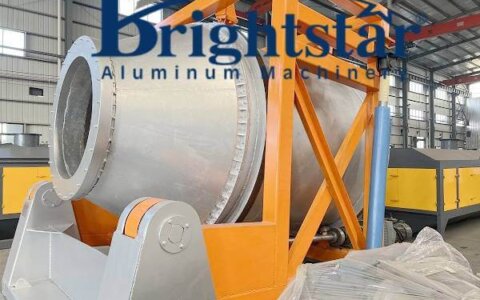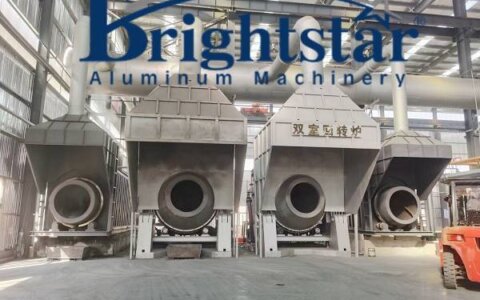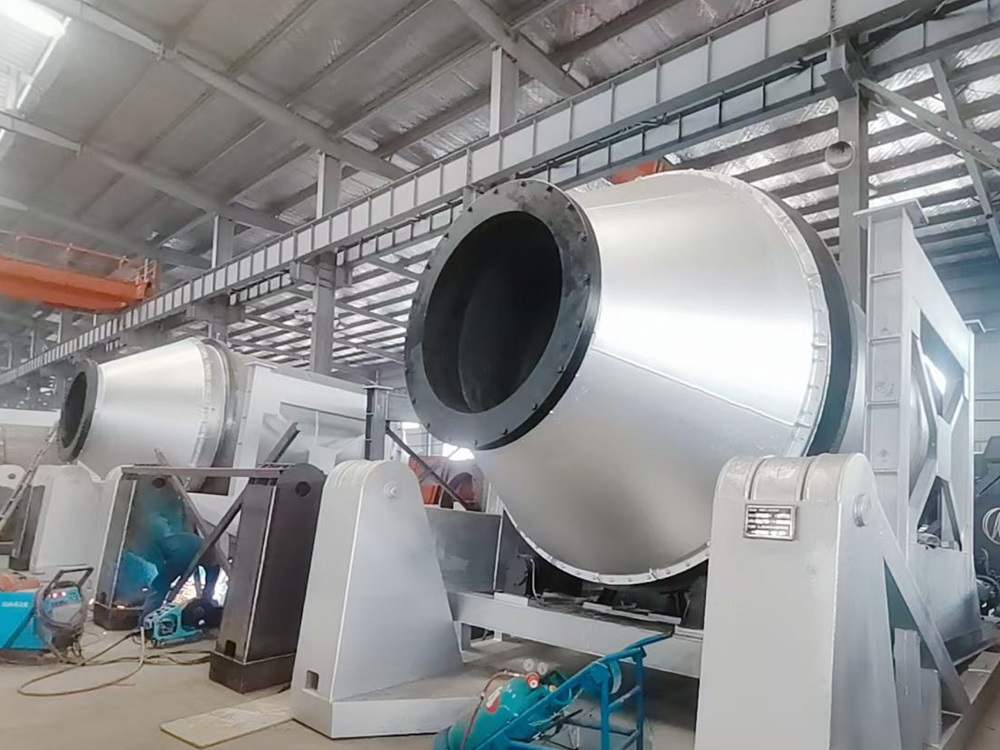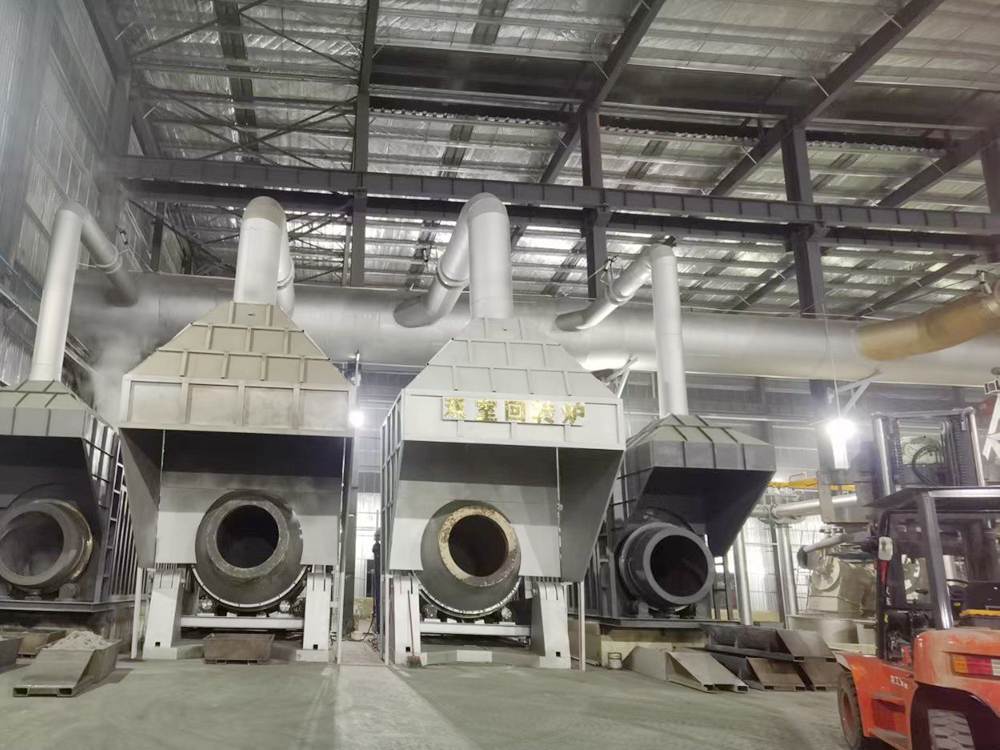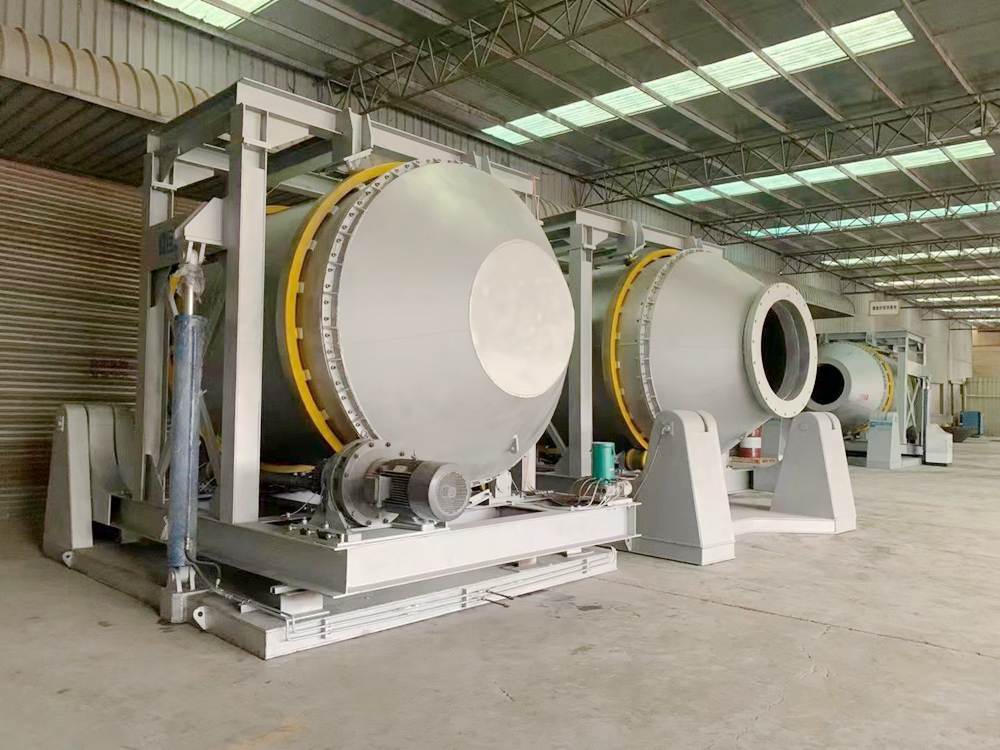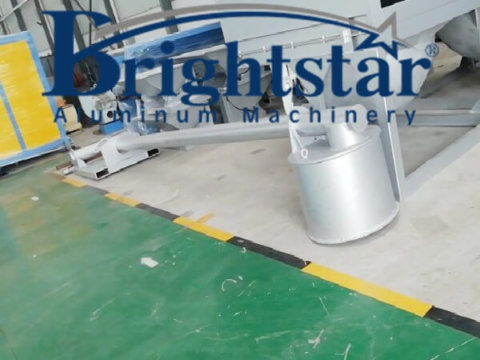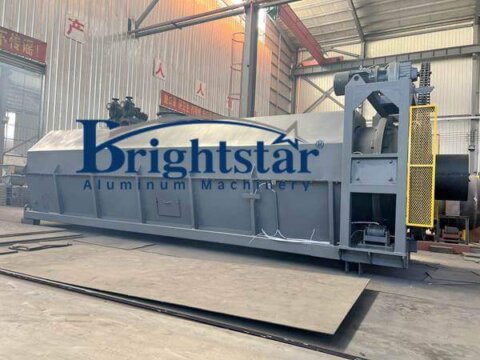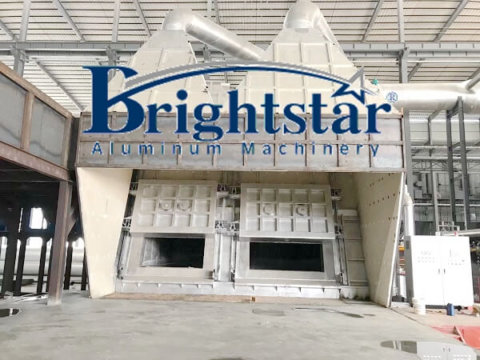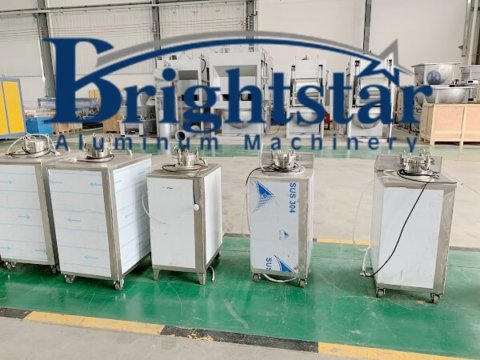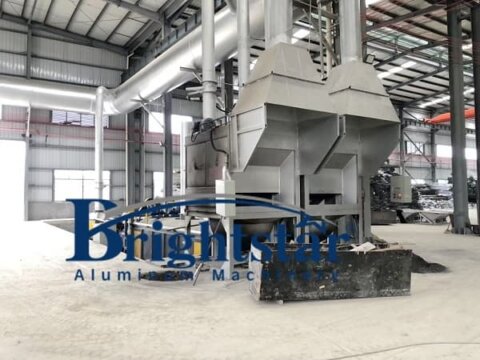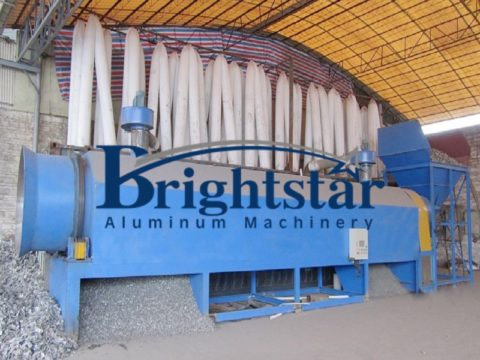
Aluminium dross rotary furnace
Aluminium dross rotary furnace
Aluminium dross rotary furnace
Aluminum dross rotary furnace is one kind of necessary equipment in the aluminum dross processing of recycled aluminum industry, which is one important part that reflects operation cost and profile of recycled aluminum recycling.
Aluminum dross rotary furnace is a tilting fully automatic aluminum dross rotary furnace, which is specially used for dross processing and recycling.
Aluminum dross has hidden economic value as a secondary renewable resource.
The aluminum dross rotary furnace heats the aluminum dross to between 800° and 1100° through the furnace heating treatment method to melt the aluminum and dross, and cast liquid aluminum into aluminum ingot through the ingot molds.
This equipment is an important tool for aluminum processing companies to treat aluminum dross, helping companies to achieve secondary recycling of solid waste materials.
Under policy pressure, aluminum dross as hazardous solid waste cannot be landfilled at will, so the treatment technology of aluminum dross rotary furnace has become the key to solving this problem.
The design of aluminum dross rotary furnace takes into account the treatment of hot and cold aluminum dross, especially aluminum dross containing high iron content.
Its working principle is based on the design of a tilting rotary furnace, which enables the furnace body to rotate with the motor to drive the gear, so as to continuously provide high-quality aluminum liquid with stable temperature and composition for the casting machine.
This equipment not only improves the processing efficiency of aluminum drss, but also ensures the quality and purity of recycled aluminum, thereby achieving effective utilization of resources and protection of the environment.
The rotary furnace is suitable for mass processing of hot dross, cold dross and aluminum dross containing big iron scraps.
The staffing is small, and only one skilled forklift operator and one auxiliary worker are needed.
It can process several tons to dozens of tons of hot and cold aluminum dross a day, and the work efficiency is extremely high.
The hot aluminum dross skimmed out from the furnace is sent into the rotary furnace with a rotary forklift, and the aluminum liquid in the aluminum dross can be separated by using the reverse rotation of the rotary furnace and the back and forth stirring of the forklift rake.
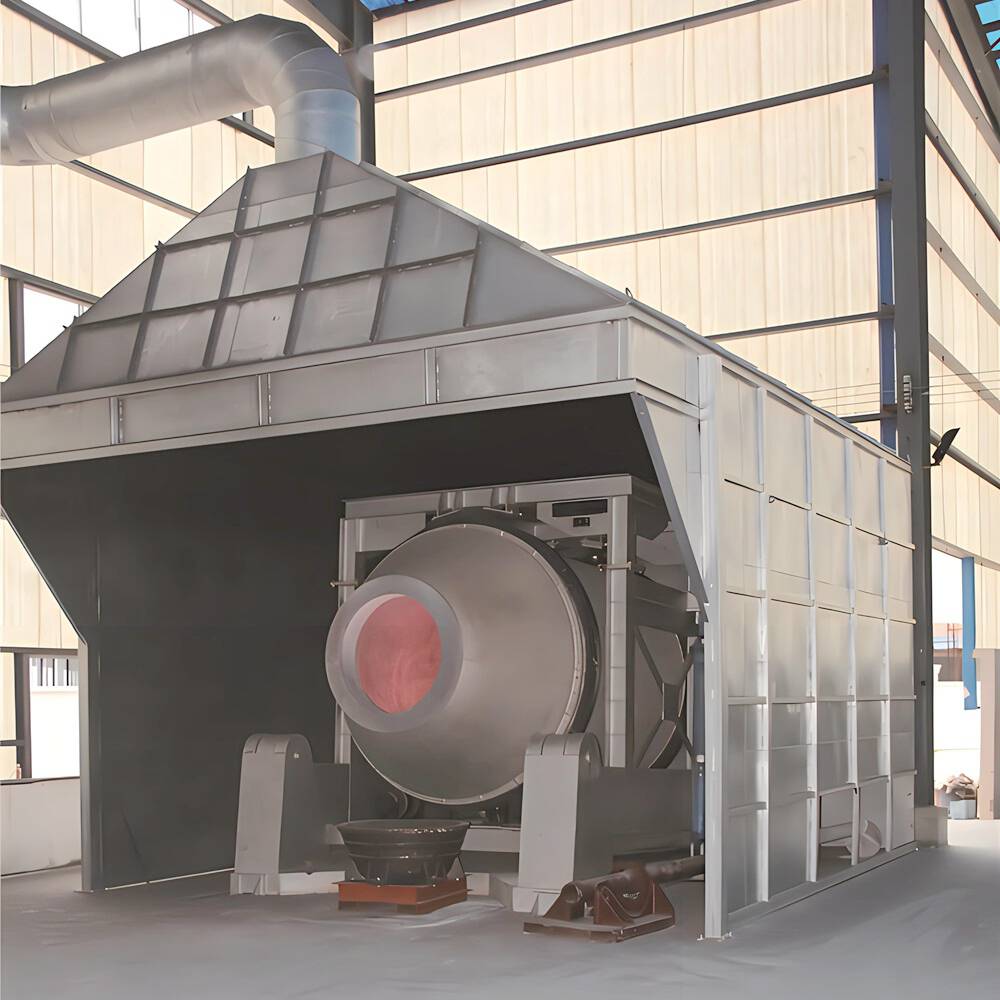
During the operation, attention should be paid to controlling the temperature, can add cold dross or small pieces of cast aluminum as a temperature control agent and secondary refining.
After the treatment is completed, tilt the body of the rotary furnace with a hydraulic oil cylinder to pour out the aluminum liquid.
After the aluminum liquid is poured, rotate the body of the rotary furnace to unload the dross.
The operation is simple and convenient.
The recovery rate of rotary furnace can reach more than 80%.
If it can work together with the dross cooling and sieving machine, the comprehensive recovery rate can reach more than 90%.
Rotary furnace and dross cooling and sieving machine are ideal equipment to process aluminum dross and cold dross in large quantities.
Due to the centralized treatment, the generated dust and smoke generated in the dross processing with the rotary furnace is convenient for centralized collection, which truly achieves energy saving and environmental protection.
An Aluminum Dross Rotary Furnace is a powerful tool in the realm of aluminum recycling.
It tackles the challenge of processing dross, a by-product generated during various aluminum melting processes.
This furnace not only recovers valuable aluminum from the dross but also plays a crucial role in optimizing resource utilization within the industry.
Function:
Dross Feeding: The furnace receives dross, typically in the form of chunks or briquettes, through a charging port.
Melting and Separation: As the furnace rotates, the dross is exposed to high temperatures, causing the aluminum (having a lower melting point) to separate from the impurities and slag.
Metal Tapping: Molten aluminum is periodically tapped and collected from the furnace.
Slag Discharge: The remaining slag and impurities are periodically removed from the furnace through dedicated outlets.
Key Features:
Rotating hearth: The heart of the furnace is a cylindrical hearth that rotates continuously, ensuring uniform exposure of the dross to heat and facilitating efficient melting and separation.
Controlled heating system: Precise temperature control allows for optimal melting and efficient separation of aluminum from impurities.
Slag removal mechanisms: Dedicated channels or tilting mechanisms efficiently remove slag and prevent contamination of the molten aluminum.
Dust extraction system (optional): Some models come equipped with a system to control dust and fumes generated during the process, improving air quality and operator safety.
Control panel: The entire process is monitored and controlled through a user-friendly interface for optimal performance and safety.
Advantages:
High aluminum recovery: Efficiently recovers valuable aluminum from dross, minimizing waste and maximizing resource utilization.
Reduced energy consumption: Optimized design and continuous rotation ensure efficient heat distribution and reduce overall energy consumption.
Improved metal quality: A controlled melting process minimizes contamination and produces high-quality molten aluminum suitable for remelting into new products.
Reduced environmental impact: Lower energy consumption and efficient dross processing contribute to a more sustainable aluminum recycling industry.
Cost-effectiveness: High aluminum recovery rates and efficient operation translate to lower costs per unit of recovered aluminum.
Applications:
Secondary aluminum production: Processing dross generated from recycled aluminum sources.
Primary aluminum smelters: Treating dross generated during initial aluminum production stages.
Foundries: Recovering aluminum from foundry dross for remelting and incorporation into new castings.
Overall, the Aluminum Dross Rotary Furnace plays a vital role in the aluminum recycling industry.
Its ability to efficiently recover valuable aluminum, minimize waste, and improve operational efficiency makes it critical equipment for any facility seeking to close the loop and contribute to a more sustainable aluminum production cycle.
The process of aluminium rotary furnace
The process of aluminum dross in the rotary furnace is inside heating, it means that we use the heat coming from aluminum dross self-ignition (during the high-temperature period of self-ignition, waiting for the heating between the stirring of high-temperature aluminum dross ), so that can improve the melting speed of aluminum and aluminum liquid temperature, reduce aluminum viscosity, easy for the separating aluminum liquid and aluminum ash.
Aluminum dross rotary furnace can extract aluminum metal in the aluminum dross from 40-60% to 15-17%, with a high aluminum metal recovery rate (about 80%).
The dust generated in the production process gets controlled, not only reduce the working strength, but also improve the dross processing environmental pollution.
Technical data of aluminium rotary furnace
Rotary furnace dross capacity and rotating speed 4.5 tons-5 tons aluminum dross can be done for 5 tons rotary furnace each time, the processing quantity can be 3.5T- 4 T for hot aluminum dross and 2T-3T for cold aluminum dross.
Rotating speed: 1.5-2 R/Min
Processing time of rotary furnace
It will take 2- 4 hours to finish the processing.
The time will differ from the proportion of cold and hot dross.
Aluminum dross rotary furnace recovery rate ≥80﹪( the aluminum content in the hot aluminum dross is about 40-60%)
we can offer the completed system for aluminum dross processing, aluminum dross cooling and aluminum dross recycling, contact us for more information!
How to choose a suitable rotary furnace?
An aluminum dross rotary furnace is a common metallurgical equipment used for the recovery and recycling of aluminum dross.
Its working principle is to use the aluminum dross in the high-temperature combustion furnace to convert it into aluminum and other useful metal materials.
It plays an important role in the aluminum industry and plays a positive role in resource conservation and environmental protection.
So how to choose a suitable rotary furnace?
Selecting a suitable rotary furnace requires comprehensive consideration of the following key factors:
1. Production requirements:
Clarify the required processing volume, including the amount of material to be processed per hour or per day.
Determine the process goals to be achieved, such as specific requirements for material drying, roasting, calcining, etc.
2. Material characteristics:
Understand the physical properties of the material, such as particle size, density, viscosity, etc.
Analyze the chemical properties of the material, including its composition, thermal stability, reaction characteristics, etc.
3. Temperature requirements:
According to process requirements, determine the high and low operating temperatures that the rotary furnace can reach and stably maintain.
4. Heating method:
Common heating methods include electric heating, gas heating, fuel heating, etc.
Select the appropriate heating method based on energy supply, cost and requirements.
5. Furnace material:
Consider the corrosiveness of the material and the working temperature, and select a furnace material that can withstand the corresponding conditions, such as stainless steel, carbon steel, refractory materials, etc.
6. Sealing performance:
Good sealing can prevent gas leakage and outside air from entering, ensure process conditions and reduce energy loss.
7. Control accuracy:
Select a rotary furnace with precise temperature control and operating parameter monitoring system to ensure production quality and stability.
8. Requirements:
Ensure that the exhaust gas emissions of the rotary furbace comply with local regulations, and if necessary, equip with corresponding exhaust gas treatment equipment.
9. Equipment size and space limitations:
Select a rotary furnace of appropriate size according to the size and space layout of the installation site.
10. Reliability and maintenance cost:
Understand the reputation and product quality of the equipment manufacturer, and choose a rotary furnace with high reliability, easy maintenance and reasonable maintenance cost.
11. Budget:
Based on the company’s capital budget, choose a rotary furnace with high cost performance while meeting production needs.
